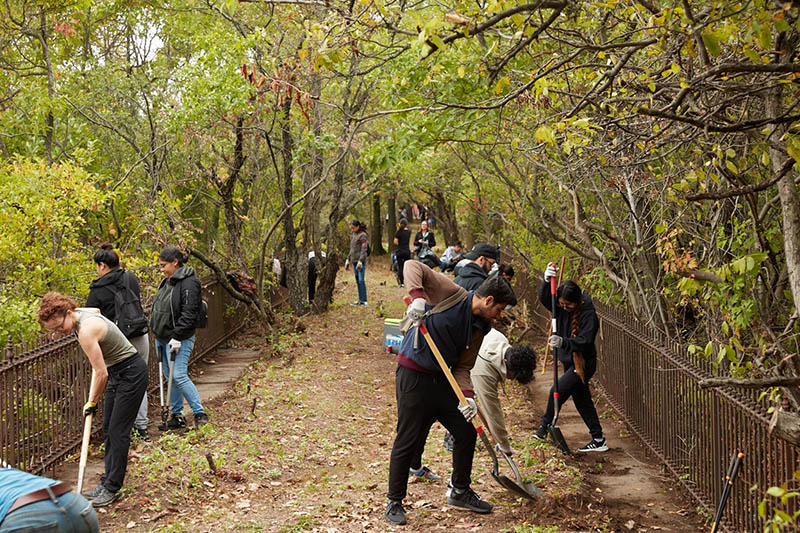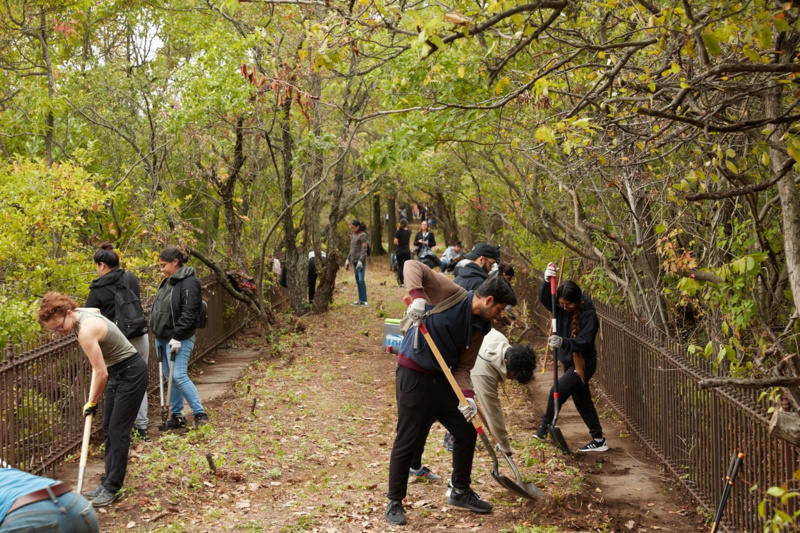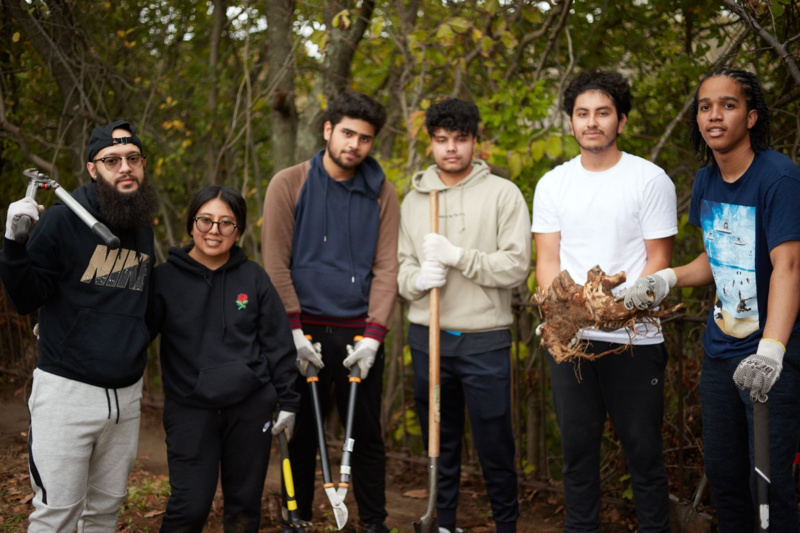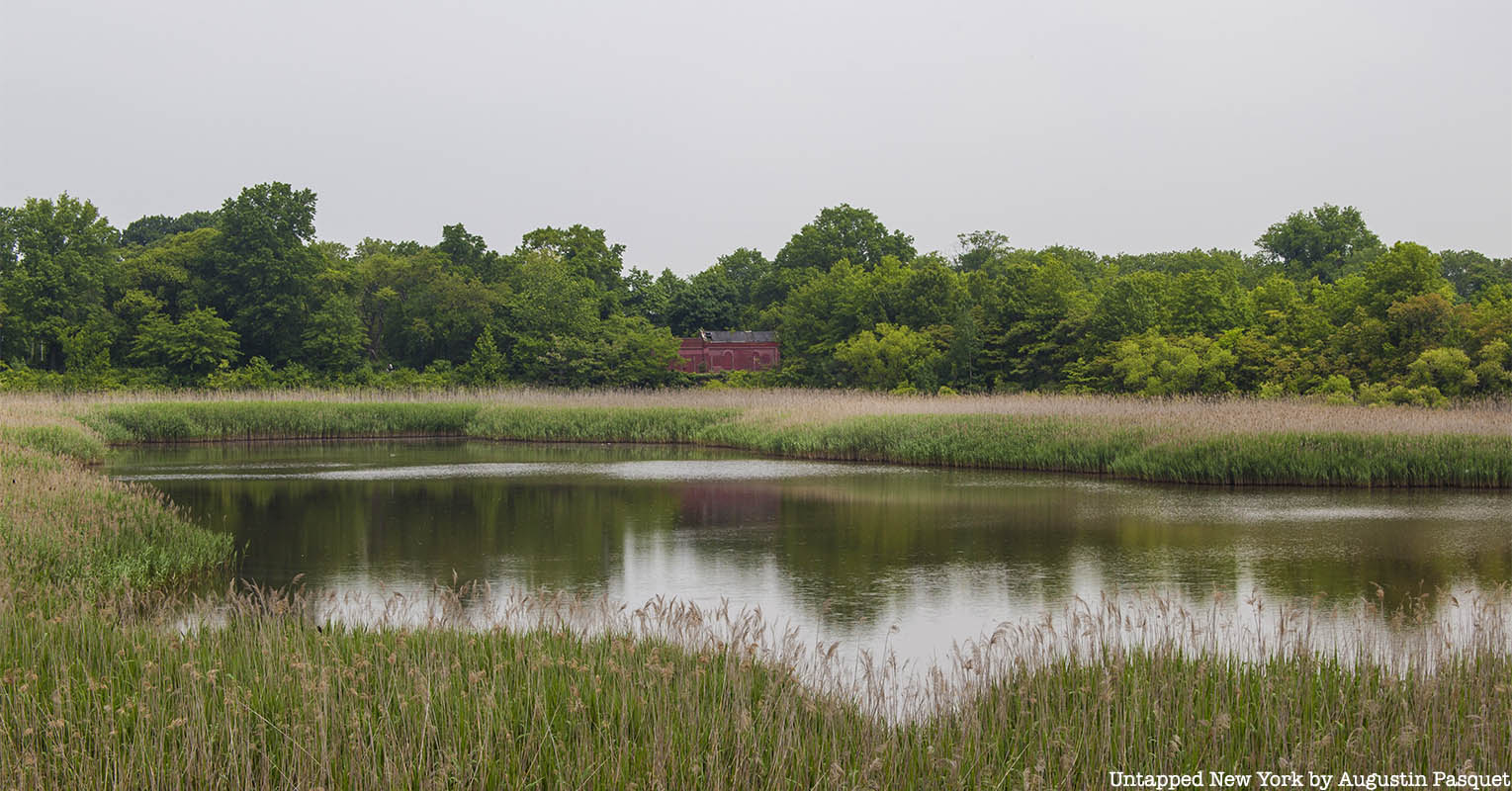A lesser known reservoir built in the same decade as the Central Park Reservoir is the Ridgewood Reservoir. The city of Brooklyn built the 50-acre Ridgewood Reservoir in 1859 with the hopes of serving its residents by storing water. The then-independent city also built a causeway that still connects the three basins in the reservoir. The West Causeway was restored years ago, but the East Causeway lay forgotten until NYC H2O directed efforts to uncover it.
NYC H2O, a not-for-profit organization centered around water infrastructure and education, saw the reservoir as a cultural and ecological treasure. Located between Brooklyn and Queens, Ridgewood Reservoir is home to 160 species of birds and 100 species of plants. With NYC H2O’s help, the reservoir’s East Causeway is now open on a trial basis.

On July 11 at 4 PM, tour the Ridgewood Reservoir visiting the newly restored East Causeway nature path with NYC H20 founder Matt Malina. Tickets are free but exclusively for Untapped New York Insiders. Become a member today starting at just $10/month and get our fist month free with code JOINUS!

Tour the Ridgewood Reservoir
The East Causeway was once covered in debris and overgrowth that covered a pathway and fence identical to that surrounding the Central Park Reservoir. With the help of the NYC Parks Department, NYC H2O is giving back to the city by restoring this large green space.
In addition to community members, educators, and artists restoring the East Causeway, more than 5,000 students have visited the reservoir to learn about science and water ecology. Contrasting the concrete jungle they live in, the Ridgewood Reservoir and East Causeway have shown students animals and fauna not present in their daily lives
“I think that students need to see this. I think citizens need to see this,” said Aaron Bell, an educator at Maspeth High School. “They need to have this for centuries into the future because we are in an urban place where many people live in settings that are covered in concrete, asphalt, and brick. So, to have even the knowledge that a place like this exists is so meaningful.”

In addition to restoring the reservoir, NYC H2O aims to tend pollinator gardens, offer birdwatching tours, and lead community cleanups. However, their work is far from over. Restoring missing sections of the causeway’s fence, installing public seating for vista viewing, improving the safety of the route, and leveling the walkway surface are all necessary for the reservoir to reach its full potential. Due to migratory birds stopping at the freshwater pond in the middle of the basin, NYC H2O calls on citizens to support the initiative that also protects this body of water.
“[The Ridgewood Reservoir] was an entirely man-made construction and then the invasives basically outcompeted the endemic species over the course of 30 years,” said Trenton Duerksen, a local artist. “It is interesting to see or to participate in efforts to find out what the balance is.”
On July 11 at 4 PM, tour the Ridgewood Reservoir visiting the newly restored East Causeway nature path with NYC H20 founder Matt Malina. Tickets are free but exclusively for Untapped New York Insiders. Become a member today starting at just $10/month and get our fist month free with code JOINUS!
Next, check out when the Ridgewood Reservoir joined the National Register of Historic Places!






